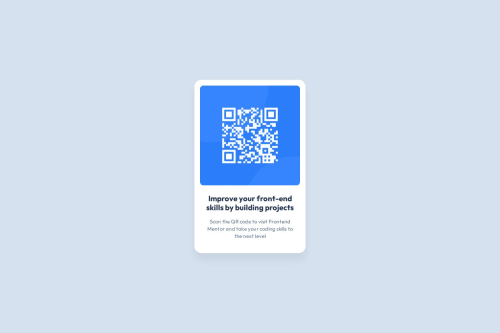Static QR Code Component

Solution retrospective
Even though the project was so small and simple, I am proud of using semantic HTML elements, abandoning my previous habit of using generic div elements coupled with a myriad of classes.
- Image gap: At first the gap between the QR code image and the element below it baffled me, but setting the
displayproperty of the image toblocksolved the issue. - Horizontal and vertical centering: I was unsure what the best approach to this problem would be. I knew the desired alignment could be implemented with grid or flexbox, but considering the simple structure of the page I deemed neither of the two layout mechanisms were necessary and I opted for the following solution:
body {
position: relative;
}
main {
position: absolute;
top: 50%;
left: 50%;
transform: translate(-50%, -50%);
}
-
Sizing different to design: While the height of the heading content box in the design file was 52px, the height of the same content box in my generated page was 52.81px (using the same font, font size, line height and letter spacing as specified in the design file), which slightly shifted the content below the image. I thought it to be reasonable enough to ignore this difference, but I would like to know if this should be fixed and how.
-
Fixed height and width of main content: as the design file didn't call for dynamic sizing, I set the dimensions of the main element using
height: 499px;andwidth: 320px;, as specified in the design file. Was this the right approach?
Please log in to post a comment
Log in with GitHubCommunity feedback
- P@PRINCEKK122
Great solution, and the projects looks great on all screen sizes.
Join our Discord community
Join thousands of Frontend Mentor community members taking the challenges, sharing resources, helping each other, and chatting about all things front-end!
Join our Discord